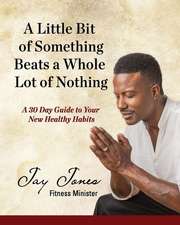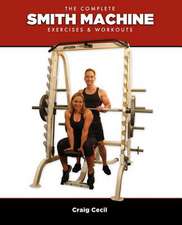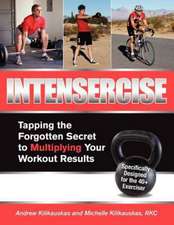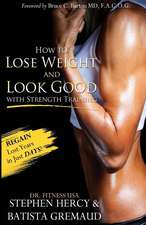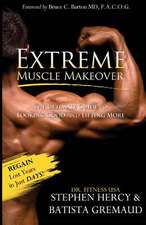What Is 'Tai Chi'?
Autor Peter A. Gilliganen Limba Engleză Paperback – 31 oct 2009
Preț: 115.46 lei
Nou
Puncte Express: 173
Preț estimativ în valută:
22.10€ • 22.98$ • 18.24£
22.10€ • 22.98$ • 18.24£
Carte disponibilă
Livrare economică 24 martie-07 aprilie
Preluare comenzi: 021 569.72.76
Specificații
ISBN-13: 9781848190245
ISBN-10: 1848190247
Pagini: 219
Dimensiuni: 157 x 233 x 11 mm
Greutate: 0.37 kg
Editura: Singing Dragon
Locul publicării:United Kingdom
ISBN-10: 1848190247
Pagini: 219
Dimensiuni: 157 x 233 x 11 mm
Greutate: 0.37 kg
Editura: Singing Dragon
Locul publicării:United Kingdom
Notă biografică
Peter Gilligan has over thirty years' experience of Tai Chi, Qi gong and the Nei Jia (internal arts).He also has extensive experience as an Outdoor Pursuits Instructor and as an Associate Research Assistant at the Ergonomics unit of University College London. This, coupled with three months study of the therapeutic applications of Qigong and Taijiquan within the Chinese National Health Service, make him uniquely qualified to relate the art of Taijiquan to both Western scientific method and physical culture and education. A registered instructor with the British Council for Chinese Martial Arts, he is founder and director of the DAH School of Chinese Internal Arts, the only full-time school of its kind in Belfast.
Cuprins
Acknowledgements. A Note on Romanisation. Section 1. Preliminaries and Preconceptions. 1. A Punet of Problems. Introduction. The Problems of Gradings. The Problem of Cultural Communication. The Problem of Language. The Need for Contextual Study. The Systems Approach. The Basic Chinese World View. Conclusion. 2. What's in a Word? Preliminaries: Background, Chinese Terms, What is Taijiquan? Taijiquan as Self Cultivation. Cultivation. Qi. Yin-Yang. Qi Gong. Schools of Qi Gong: Internal and External. The Use of Sensitivity. The Use of Intention (Will/Imagination). The Three Systems of Qi Gong. Types of Qigong. Jing Gong. Jing - Dong Gong. Dong Gong. Use of Xin (Sensitivity) and Yi (Will) in Qi Gong. Summary. 3. Laying the Martial Ghost. Taijiquan as Self Defense. Self Defense and Martial Art. Wu and Martial are not the Same. Martial Art and Wu Shu. Wu Shu, Gong Fu and Self-Cultivation. Taijiquan as Wu Shu. Three Levels of Testing in Taijiquan. The Role of 'Sparring' in Taijiquan. A Taijiquan Approach to Wu Shu. A Personal Encounter. Conclusion. Section 2. Initial Foundation. 4. Returning to Nature, Restoring Spring. The Meaning of Natural in Taijiquan. The Rectification of the Body. The Need for a Teacher. The Rectified Body. The Rectified Body: No Blocking or Wasting. Natural Alignment. Structure and Posture. The Application of Yin-Yang to the Body. Conclusion. 5. Learning How to Learn. Don't Try Too Hard. Should is a Condition ? Not a Command. Wei Wu-Wei. Song. Song is the Expression of Taiji in the Body. Testing. Methods of Testing. Testing Song. Making the Most of Your Teacher. Summary. Basic Standing Posture. Three Circle Theory. 6. Methods and Techniques. Taiji and Taijiquan are not the Same. Daoyin. What are Methods and Techniques. People are Individuals, Unique and Different. Daoyin is Qi Gong. Daoyin and Gong Fu; Internal and External. Daoyin in Taijiquan. An Exercise to Learn Daoyin. The Three Systems of Daoyin Qi Gong. Conclusion. Section 3. The Art of Taijiquan. 7. The Six Secrets. The Six Secrets. Nei Gong. The Six Secrets as Nei Gong. Discussion of the Six Secrets. Three-Circle Theory. Yin Yang Theory. Taijiquan Forms are Movements. Benefits of Yin-Yang Form Study. Stages of Yin Yang Study. Spiral, or Qi, Form. Problems in Spiral Form Study. Centre-Turn Form. Spiral in the Leg. Yin-Yang Head and Hands. Conclusion. 8. Practice to Perfection. The Syllabus of Taijiquan. The Taijiquan Teacher's Job. Practicing Taijiquan. Syllabus, Technique and Method. Internal Breathing; Nei Gong. Nei Gong Daoyin Exercise. Testing and Warnings. Traditional Nei Gong. Conclusion. Appendix. Taijiquan: Forms, Techniques and Practices. Supplementary Forms and Practices. Pushing Hands. Two Person Taijiquan. Weapons Forms. References. Bibliography.











